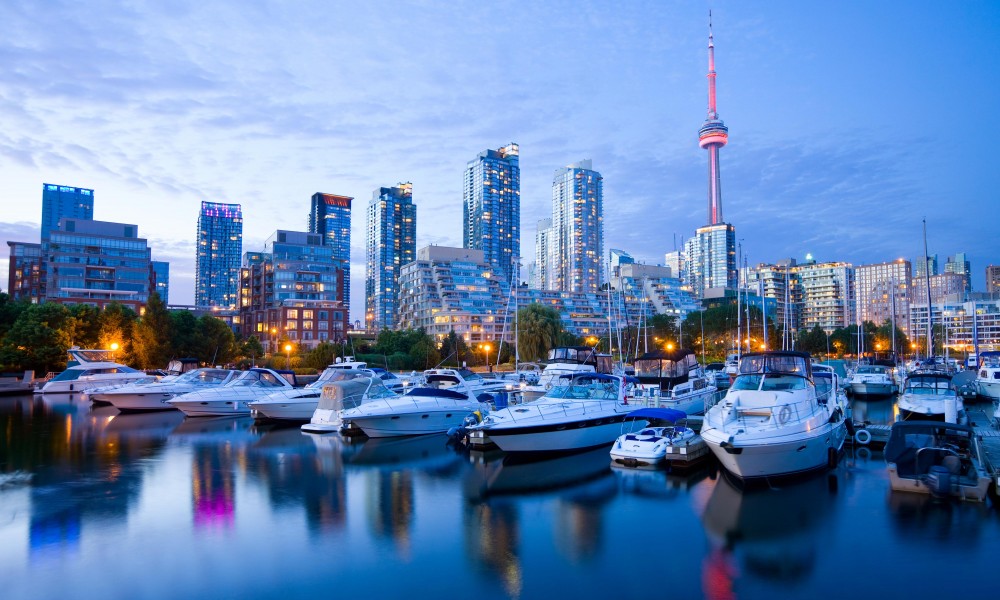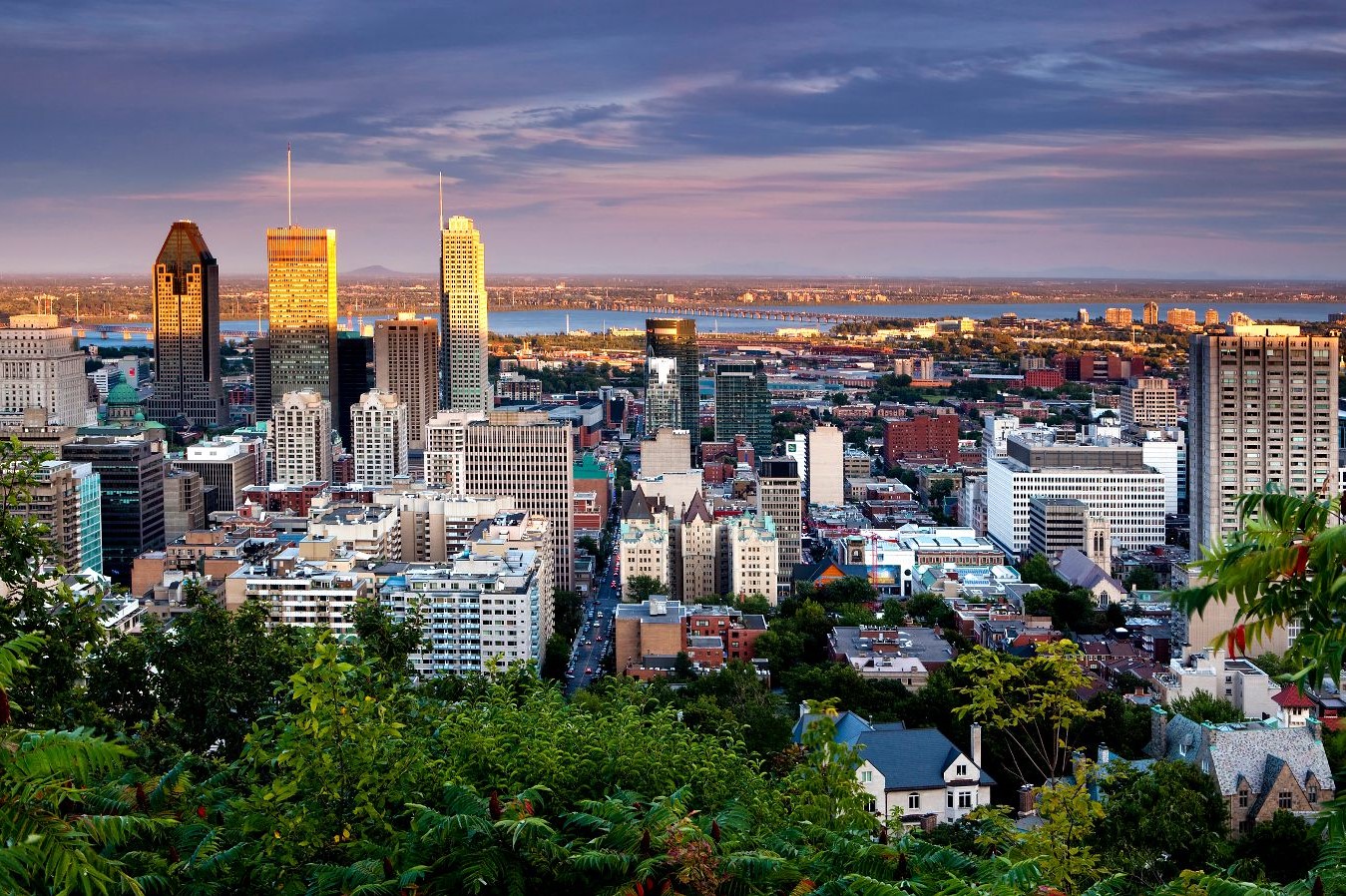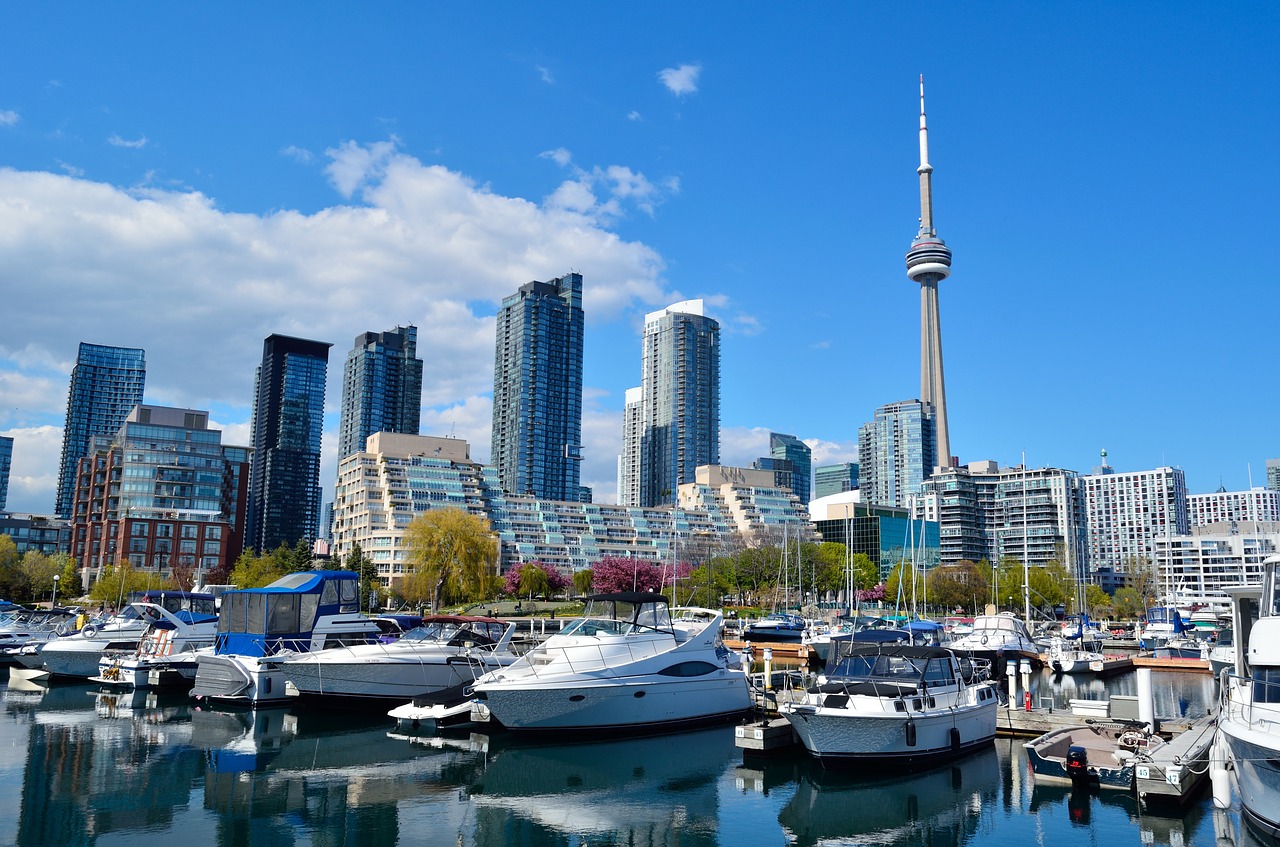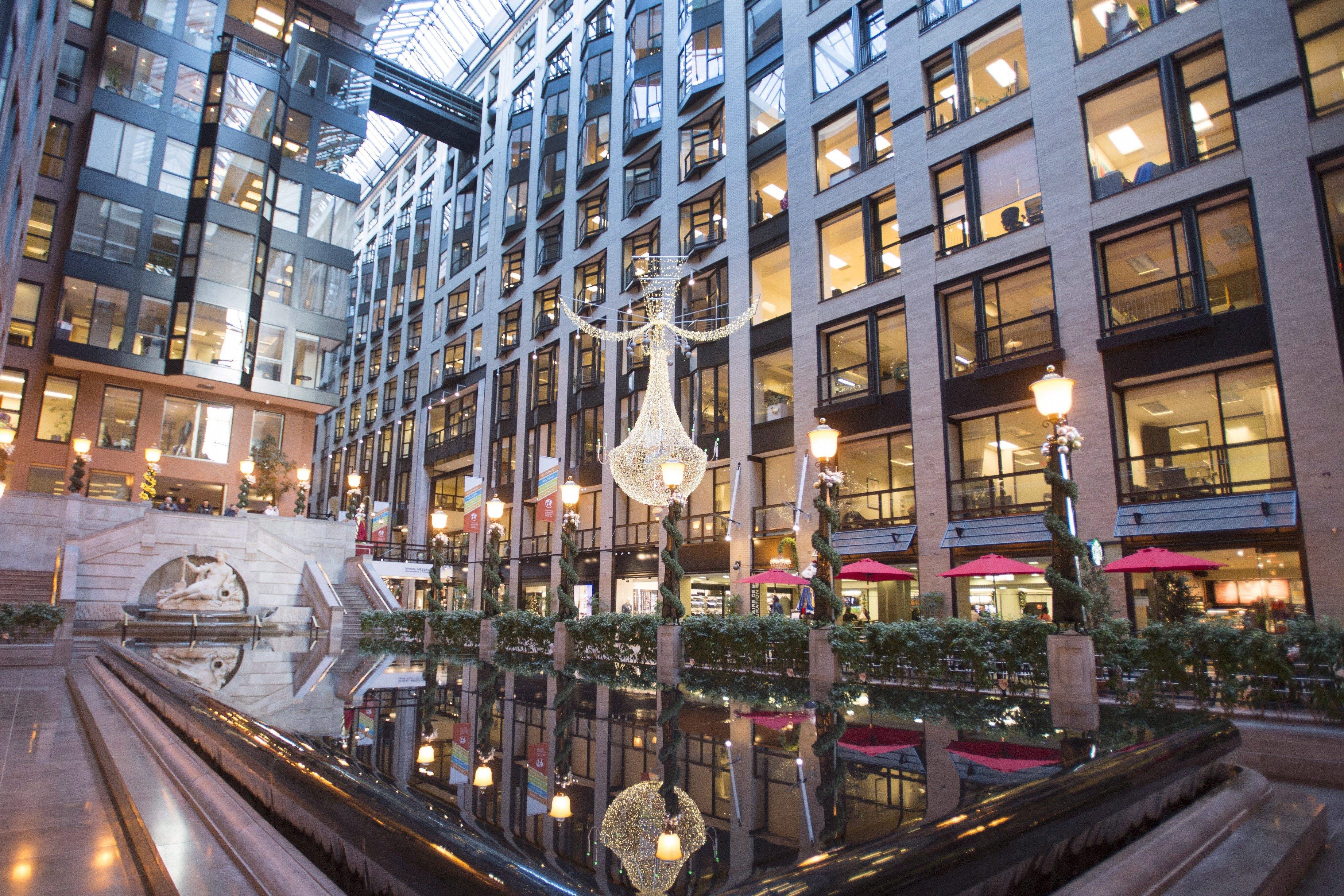Canadian skyscrapers: Upwards and Downwards

What can we say about the Canadians: the nature tests them with harsh winters and real snowstorms. However, the Canadians do not cancel their meetings, and even go light in winter. How they do it – read below in OUTLOOK.
Surely even the fresh air fans and cold training are not likely to be delighted by the Canadian winter as minus 30 is quite commonplace temperature, and it gets even colder very often. And if you add to it weeks long snowfalls with winds penetrating to the bone, you have goose bumps, don’t you? For life outside not to be the game of survival, and for cars not to slip on icy slopes, municipalities of large Canadian cities in the middle of the last century began to develop projects for the protection of its citizens and infrastructure from the weather. Since people are not able to control the weather, almost simultaneously both in Toronto and in Montreal in 1950, it was decided to build underground spaces, equipped to support normal life of the city. Photo tripsavvy.com
Photo tripsavvy.com
At first glance, it seems that this Canadian idea has nothing unique - for centuries humanity has refuged under ground from dangers, but the evolution brought us all to the surface. However, those who at least once with their own eyes saw the underground part of the Canadian cities, will understand that going down is certainly not the degradation, but the most practical move. They start building underneath the streets of Montreal and Toronto almost simultaneously with the construction of the subway in these cities. The city authorities in 1960 sold land for the underground shopping areas or gave areas to a long-term lease at a very low price, attracting potential tenants. They mostly were large companies, hotels, and of course, shops and supermarkets. The most important condition was that the owner of the retail space under the ground had to invest into the construction of the outputs to surface. Work was in full swing and in 1970 Montreal residents began to move around the city in any weather, and stay underground literally for days! Photo needpix.com
Photo needpix.com
There is dense network over 32 km of tunnels include shopping malls, apartment buildings, hotels, condominiums, banks, offices, museums, universities, seven metro stations, two commuter train stations, a regional bus terminal, amphitheatre and arena. The set of interconnected complexes with a comfortable temperature, own transport and the opportunity to move around quickly by lifts to almost any skyscraper, known as RÉSO (a homonym for the French word "réseau", meaning "network") let us not forget that Montreal is the second most populous French-speaking city of the world after Paris. All this beauty is arranged clearly and accessible: its navigation system was repeatedly awarded, because even tourists come down here once or twice, begin to understand how it works. In the cold seasons at least 500 thousand people enjoy RÉSO every day, because you can get here from almost any of the residential complex or an administrative building. Montreal’s Underground City (La Ville Souterraine) was built jointly with the private investments from business renting premises for 50 or 100 years, so it cost not so expensive. And today it is profitable because it allows you to save a lot of money that is usually spent for cleaning the roads from snow and liquidation of emergency situations in the winter - now the funds are spent on other projects.
Read also: Only sky is a limit! World's highest observation decks
In Toronto, the largest city of the country, the construction of its underground city stopped for a while in the 1960s, but the real boom occurred twenty years later, when in a few years, the underground area increased by 20 kilometres. Its name is PATH, and the construction of some of its areas is still going on, as the success of Montreal project so inspired Toronto authorities, that they decided not only to catch up, but also beat colleagues in size and quality. This ant home is officially the world's largest, and the townspeople are proud of it most of all, so they bring tourists here all year round, even in summer. Although the heat does not influence lives of the Canadians, coolness of Toronto's PATH Network attracts, almost all the best bars, clubs, cafes and metropolitan restaurants have their "branches" here, and you can come down here straight from the hotel, bypassing traffic and also get back. According to the plans of architects, the underground city will grow almost twice, and will connect the suburbs with the centre even before 2050. Photo globalnews.ca
Photo globalnews.ca
Of course, a massive web of tunnels affects the rhythm and way of life both in Toronto and Montreal, and for visitors all this may seem strange, especially if you come here in the warm season. But if you only set your foot outside in mid-January, you will immediately appreciate all the charm of these comfortable subterranean complexes. Projects have proven their right to life and become critical infrastructure, so now they are thinking about the same labyrinths in Ottawa to Vancouver.
Cover photo home.kpmg





















